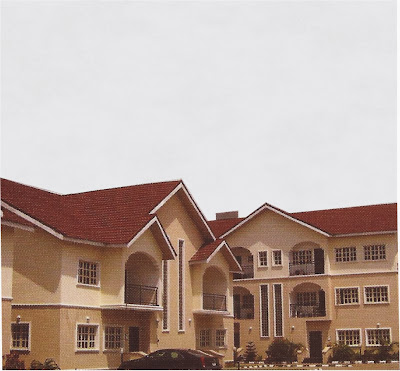ADENIYI (1983): Urban land - use Mapping in Nigeria.
Nigeria Cartographic Association (NCA)
3rd
Annual Publishing, Enugu.
BOLADE, T.
(1981): “An Introduction to the Spatial Analysis of Intercity Freight Flows
in
Nigerian Economy” Seminar Paper, Department of
Geography, University of Lagos, Lagos.
FREEDMAN
(1989): “Environment Ecology’’ The Impact of Pollution and other Stresses
on
Ecosystem Structure and Function.
London: Academic Press.
GRAVA S.
(1977): The Lagos metropolitan Master Planning, Lagos: UNDP
Assisted Report.
HOYLE, B.S.
(1973): Transport and Development. London: Macmillan Press Ltd.
ILOEJE, N.P.
(1981): A New Geography of West Africa. England: Longman Group.
LESLIE, R.
(1971): Road Transport Management Systems and Records. London: Gower
Press
Ltd.
LUGGARD.
(1922): Development of Africa. U.S.A: Pengium Books.
MONANU P.C
(1971): Journey to work pattern in Edmonton. M.SC Thesis Department of
Geography Canada: University of
Alberta Edmonton.
NATIONAL
TRANSPORT CO-ORDINATING COMMISSION (1979): Survey of Major Road
Transporters. Nigeria: South East Zone.
OBOLI,
H.O.N. (1981): A New Outline Geography of West Africa. Lagos: Africa University
Press
Ikeja.
O’ CONNOR
(1965): The Geography of Tropical African Development. London:
Pergammon
OFOMATA,
G.E.K. (1975): Nigeria in Maps: Eastern States. Benin City: Ethiopia
Publishing
House.
OGBU S.O.,
AND ENETE, C.I. (2006): Fundamentals of Research Methods and Reports
in
Environmental Studies. Enugu: Glanic Venture.
OKOKO
(1998): Introduction to Research Methodology. Africana: Fep Publishers
Ltd.
OLAKUNORI,
K.O. (2000): Transportation Management. Enugu: Computer Edge Publishers.
OLUDURO
(1985): Observed the Enormous Capital and Human Resources Nigerians had
Invested in Transportation. A Study
Conducted in Lagos. Daily Times, May 5, Vol. 2, No.
1Pp. 5.
OMOTUNDE, D.
(1988): Transit-such a grand idea will take some doing to become a reality,
in
Newswatch, 11th April,
Vol. 7, No. 15, Pg 14-20.
ONAKOMAIYA,
S.O. (1978): “Over Land Transport”. In Oguntoyinbo (Ed), Geography of
Nigerian
Development. Ibadan: Cartan Press
West Africa Ltd.
REHEEM
(1989): “Observed a Drastic Increase in the Public Transport Demand, but
Accelerated Decrease in Transport
Supply”. A Study
Conducted in Lagos, Daily Times,
July, 8, Vol. 1 P.8.
RILEY, D. AND
SPOLTON, L.M. (1987): World Weather and Climate.
Cambridge: Press Syndicate
of the University of Cambridge.
ROBERT
(1978): An Introduction to Town Planning Techniques. Great Britain:
Anchor Press
Ltd.
ROBINSON, H.
(1961): Economic Geography. London: Macdonaid and Evans Ltd.
ROBINSON, J.
(1971): Highway and our Environment. New York: Mc Graw- Hill book
Company.
STUCKGY, B.
(1973): Transportation and African Development, the Land Locked
Countries, IDEP
Seminar on Rationalization of
Development Planning in African, Ibadan, Nigeria.
TUNJI
(1989): The Quality of Infrastructural Facilities; Services in Nigeria Urban
Centre are
Facilities; Services in Nigeria Urban Centre are
generally Poor and Inadequate. Seminar
Paper Presented in Kaduna, Nigeria.
UMOH, B.D (2001):
Population
Studies for Nigeria. A New Perspective Institute for
Development Studies. Enugu:
University of Nigeria.
USENI
(1986): “the Pivot which brings Transport is any Effort aimed at Initiating
and
Sustaining Economic Growth”. Conference of Commissioners
Conducted at Lagos,
Nigeria.
VOLGT, F.
(1967): The Importance of the Transport System for Economic Development
Process. United Nation Economic Commission for
Africa: Addis Ababa.


































